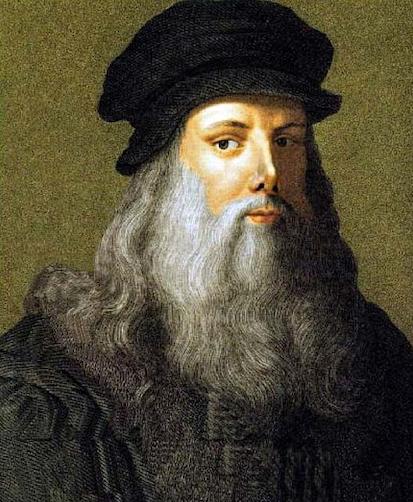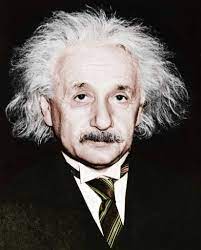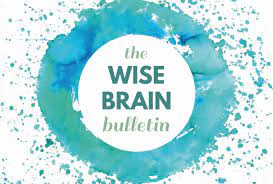Leonardo da Vinci — Albert Einstein


We define genius as original and exceptional insight while performing some art or endeavor that surpasses expectations, sets new standards for future works, establishes better methods of operation, or remains outside the capabilities of competitors. Prior to doing some background reading on the subject, I assumed that at such heights of intelligence, there is little room for fallibility, errors, flubs, mistakes, wrong guesses, etc. I discovered this was wrong, and it made me reconsider what genius really means. It’s not what we’ve been told by mythmakers.
Let’s consider two well-known and uncontested cases of genius, Leonardo da Vinci and Albert Einstein. For many of us, they represent the epitome of creativity in arts and science and a full-flowering of the human potential. Leonardo da Vinci is the embodiment of the Renaissance man. He was a painter, artist, engineer, architect, scientist, inventor, cartographer, anatomist, botanist, and writer. His active imagination conceptualized the tank, the helicopter, the flying machine, the parachute, and the self-powered vehicle. He was a man far ahead of his time and many of his visionary inventions became real only centuries later.
As an engineer, Leonardo sensed more than most how the design of machines informed by mathematical laws of physics is better than relying just on practice. He was the first to design separate interchangeable components deployed in a variety of complex devices. And no one drew machines with more attention to detail and reality. His insatiable curiosity about nature undergirded his efforts to devise flying machines. He sought not only to imitate flying birds, but to understand and apply the principles of flight to endow man with the ability to fly on his own. His genius lay in his mastery of engineering principles, design, and natural law.
Walter Isaacson, author of “Leonardo da Vinci,” describes how Leonardo integrated science with his artistic genius. “Leonardo spent many pages in his notebook dissecting the human face to figure out every muscle and nerve that touched the lips. On one of those pages you see a faint sketch at the top of the beginning of the smile of the Mona Lisa. Leonardo kept that painting from 1503, when he started it, to his deathbed in 1519, trying to get every aspect exactly right in layer after layer. During that period, he dissected the human eye on cadavers and could understand that the center of the retina sees detail, but the edges see shadows and shapes better. If you look directly at the Mona Lisa smile, the corners of the lips turn downward slightly, but shadows and light make it seem like it’s turning upwards. As you move your eyes across her face, the smile flickers on and off.”
While one can sense the inexhaustible work, energy, curiosity, and creative drive behind Leonardo’s genius, the stories insinuate his creativity unfolded naturally, perfectly, and inevitably. But, much of this reality is mixed with mythology since Leonardo created an endless succession of untested contraptions, unpublished studies, and unfinished artworks. There was no inevitability to his creations. There was a lot of fudge work and many, many steps before the final product. It would appear his genius rested on having an active and creative mind. What motivated such a mind? Undoubtedly, it depended on several personality attributes, but foremost among these was curiosity, his defining trait. Everything seemed to interest Leonardo. Maybe genius is simply an unrelenting curiosity that in its wake happens unexpectedly upon original, novel, and unique insights. The genius is that all that preparation and work allows one to recognize those marvelous coincidences.
Like da Vinci, Albert Einstein reached the pinnacle of admiration in the modern era as the iconic symbol of genius. His most famous equation is E = mc2. Einstein, however, doubted how important this was and dismissed notions it might one day be at the heart of an alternative energy source. In 1934, he declared that “there is not the slightest indication” that atomic energy will ever be possible. Today his equation is at the heart of over 400 nuclear power stations, which are about to become the world’s leading source of non-carbon-based energy.
Einstein thought his biggest mistake was refusing to believe his equations that predicted the expansion of the Universe. While some astronomers favored the notion that many objects in the sky were actually “island universes” located well outside the Milky Way, most astronomers of his time thought that the Milky Way represented the full extent of the Universe. Einstein sided with this erroneous view, and when he applied his General Relativity theory to the entire universe, he had to add a special type of fudge factor into his equations, a cosmological constant, to make it static and eternal. Unfortunately, later evidence showed that, in fact, the Universe was and is still expanding equally and uniformly in all directions on large cosmic scales. In the 1930s, Einstein referred to his introduction of the cosmological constant to keep the Universe static as his “greatest blunder.”
Today we know that Einstein actually missed out on predicting something even bigger: the existence of dark energy. In the mid-1990s, 40 years after Einstein’s death, astronomers showed his misplaced faith on his beautiful equations. Studies of exploding stars in distant galaxies revealed the Universe isn’t just expanding, it’s expanding at an ever-faster rate. The cause for this is a force stronger than gravity, but acting in the opposite direction—and with no obvious origin. This is the mysterious dark energy. Einstein’s theory can accommodate it, but at the price of reintroducing the same ugly fudge-factor Einstein loathed. Most theorists believe dark energy has its origins in the quantum laws of the sub-atomic world, which allow even apparently empty space to be seething with energy. Einstein’s antipathy for quantum theory made it unlikely he would have incorporated it into his most cherished work.
In fact, Einstein had to be dragged kicking and screaming to the idea that the Universe began in a Big Bang. After learning from the Belgian mathematician Georges Lemaître that General Relativity (GR) predicts the creation of the Universe, he dismissively replied: “Your calculations are correct, but your physics is abominable.” It’s easy to see why he believed this since the GR equations go haywire at the moment of the Big Bang, giving literally infinite results. What’s needed is something extra to bring the theory back under control. Theorists now believe they know what that something extra is—and, regrettably for Einstein, it’s the very thing he couldn’t accept: quantum theory. Recent calculations by theorists in the US and Europe have shown that combining GR with quantum theory results in a theory of ‘quantum gravity’ that gives insights not only into the Big Bang but also what came before it.
Although Einstein played a major role in developing quantum theory, he became increasingly suspicious of its fuzzy, ‘probabilistic’ view of particles, which seemed to prevent even their position and speed being known with complete precision. He summed up his view by saying, “God does not throw dice.” But today, most physicists believe Einstein was wrong. Throughout his career, Einstein had an almost religious belief in the fundamental unity of the Universe, and spent decades searching for the one true Theory of Everything (ToE), which would describe the Universe and everything in it. His failure did not deter others, and over half a century after his death, the quest for the ToE continues. The bad news is that there may be at least 10,500 ToEs, and no obvious way of deciding between them. There’s now a growing suspicion that the whole idea of just one true ToE may be a mistake—and that Einstein was naïve to spend his life looking for it.
These brief highlights of Albert Einstein’s miscues and false steps in his theorizing, amidst the many times he proved to be right, reinforce what my argument about genius is. It is not a natural, perfectly linear, and inevitable unfolding that occurs in the mind of one person. Rather, it reflects circuitous thinking, hard work, and an unrelenting drive that makes mistake after mistake. Yet, somewhere along this messy path, this creativity and uncompromising drive falls upon and discovers, perhaps unexpectedly, a heretofore unknown jewel of creation.
Unless special circumstances occur, such as injuries or neglect, most children embody the driving curiosity and energy of genius. My argument is that everyone is born with equal potential to realize such a trait. While it is unimpeded in an Einstein or da Vinci, it is blocked, obstructed, unencouraged, derailed in the vast majority of us. It is up to our society at large to identify these reasons and avoid this human misfortune. As Walter Bowman Russell, an American Renaissance man in his own right, put it in 1946, “Mediocrity is self-inflicted; genius is self-bestowed. The choice is yours.”




